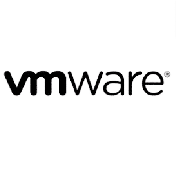Seminarinhalt
In diesem Training erfahren die Kursteilnehmer, wie sie Windows-Desktops in einer Organisationsumgebung unterstützen und konfigurieren. Die Kursteilnehmer entwickeln Fähigkeiten, die das Installieren, Anpassen und Aktualisieren von Windows 10 und höheren Betriebssystemen umfassen. Die Kursteilnehmer erfahren, wie Sie Speicher, Dateien und Geräte verwalten und Netzwerkkonnektivität für Windows konfigurieren. Außerdem erfahren sie, wie sie das Windows-Betriebssystem und die Daten auf dem Gerät schützen. Schließlich lernen die Kursteilnehmer, wie sie Windows-Clients verwalten und Probleme behandeln.
Programm
Explore the Windows client
Examine Windows client editions and requirements
Evaluate Windows client installation methods
Upgrade and migrate Windows clients
Evaluate deployment methods
Explore authentication
Manage users and groups
Configure User Account Control
Implement device registration
Explore common configuration options
Explore advanced configuration methods
Configure IP network connectivity
Explore name resolution
Explore remote access
Employ remote management
Verwalten des Speichers auf Windows Clients
Maintain disks and volumes
Implement Storage Spaces
Explore Windows client file systems
Configure and manage file access
Configure and manage shared folders
Manage user files
Provide apps to users
Manage Universal Windows Platform apps
Verwalten Sie den Microsoft Edge Browser
Explore the Windows servicing model
Update Windows clients
Explore malware and threat protection
Explore Microsoft Defender
Explore device encryption features
Explore connection security rules
Explore advanced protection methods
Erkunden von Problembehandlungsmethoden
Explore Windows architecture
Explore support and diagnostic tools
Monitor and troubleshoot Windows client performance
Employ file recovery in Windows client
Explore application troubleshooting
Troubleshoot Windows startup
Troubleshoot operating system service issues
Troubleshoot device driver failures
Explore physical hardware troubleshooting
Troubleshoot physical failures on Windows clients
- Describe the Windows client
- Explore what's new in Windows client
- Evaluate the benefits of Windows client for small and medium-sized organizations
- Explain desktop management in an enterprise environment
Examine Windows client editions and requirements
- Examine Windows client editions and capabilities
- Select a Windows client edition
- Examine Windows hardware requirements
Evaluate Windows client installation methods
- Explore Windows client installation methods
- Describe installation methods for Windows client
- Examine the process of installing the Windows client
- Evaluate new deployment options
Upgrade and migrate Windows clients
- Examine the process of upgrading Windows clients
- Explore supported upgrade paths
- Examine the process of migrating Windows clients
- Compare upgrade and migration considerations
- Evaluate common upgrade and migration scenarios
Evaluate deployment methods
- Examine deployment options for Windows client
- Explore imaging and autopilot
- Explore deployment strategies
- Explore deployment tools
- Explore the User State Migration Tool
- Explore client virtualization
Explore authentication
- Explore authentication and authorization
- Explore user account types
- Manage local users and groups
- Explore domains and workgroups
- Explore credential manager
- Explore Windows Hello
- Configure password policies and user properties
- Explore user profiles and their contents
Manage users and groups
- Explore Active Directory
- Compare Active Directory Domain Services and Azure Active Directory
- Sign in to a domain
- Manage users and groups using Active Directory
Configure User Account Control
- Explore User Account Control
- Examine how UAC works
- Understand UAC elevation prompts
- Configure UAC notification settings
Implement device registration
- Understand the challenges to data access for multiple device types
- Explore the Microsoft device strategy framework
- Explore device registration
- Examine how device registration works
- Assess infrastructure requirements to support device registration
- Register and enroll devices
Explore common configuration options
- Customize the user interface
- Explore the action center
- Use the settings app
- Use the Control Panel
- Examine the display options
- Evaluate options for mobile devices
- Configure power plans
- Examine Windows client privacy features
Explore advanced configuration methods
- Explore Windows activation
- Explain Group Policy
- Apply Group Policy Objects
- Explore Windows PowerShell
- Use Windows PowerShell
- Deploy a custom Start menu in Windows
- Examine device drivers
- Manage device peripherals
- Examine printer configuration
- Understand Type 3 and 4 printer drivers
- Manage client-side printing
- Manage print server properties
Configure IP network connectivity
- Explore Windows network configuration
- Explore IPv4 settings
- Define subnets for IPv4 networks
- Explain public and private IP addressing
- Implement automatic IPv4 addressing
- Examine tools for configuring network settings
- Examine tools for troubleshooting network connections
- Examine IPv6 addressing
- Explore IPv6 in Windows client
Explore name resolution
- Explain how name resolution works
- Explore the domain name system
- Troubleshoot name resolution
- Examine wireless network technologies
- Configure Wi-Fi settings and profiles
- Configure wireless display with Miracast
Explore remote access
- Explore virtual private networks
- Create a VPN connection in Windows client
- Describe Always On VPN
Employ remote management
- Examine Remote Desktop
- Use Remote Assistance
- Examine Remote Desktop services
- Use remote commands in Windows PowerShell
- Describe Windows Admin Center
Verwalten des Speichers auf Windows Clients
- Grundlegendes zu Speicheroptionen
- Untersuchen von Netzwerk- und Cloudspeicheroptionen
- Beschreiben der Partitionen „Master Boot Record“ und „Grid Partition Table“
- Beschreiben dynamischer Datenträger
- Erkunden von Datenträgerverwaltungstools
- Beschreiben einfacher Volumes
- Vergleichen gespiegelter, übergreifender und Stripesetvolumes
- Verwalten vorhandener Volumes
Maintain disks and volumes
- Monitor storage usage
- Understand disk optimization
- Explore file and folder compression
Implement Storage Spaces
- Explore Storage Spaces
- Examine features of Storage Spaces
- Examine scenarios for Storage Spaces
Explore Windows client file systems
- Examine the File Allocation Table (FAT) file system
- Examine the New Technology File System (NTFS)
- Examine the Resilient file system
Configure and manage file access
- Explore tools used for managing files and folders
- Understand file and folder permissions
- Understand permission inheritance
- Implement conditions to limit file and folder access
- Understand effective permissions
- Use the effective access feature
- Examine permissions when copying and moving files
Configure and manage shared folders
- Explore shared folders
- Examine methods available for connecting to share folders
- Examine shared folder properties
- Combine shared folder and NTFS permissions
Manage user files
- Understand Windows Libraries
- Evaluate OneDrive
- Enable OneDrive
- Examine Work Folders
Provide apps to users
- Explore types of Windows apps
- Examine methods for deploying desktop apps
- Install desktop apps manually
- Automate desktop app installation
- Install Microsoft 365 apps
Manage Universal Windows Platform apps
- Compare Microsoft Store and Microsoft Store for Business
- Manage access to Microsoft Store apps
- Configure assigned access to a single store app
Verwalten Sie den Microsoft Edge Browser
- Untersuchen des Microsoft Edge-Browsers
- Konfigurieren von Microsoft Edge
- Untersuchen von Datenschutzfeatures in Microsoft Edge
- Verwalten von Microsoft Edge-Erweiterungen
- Internet Explorer-Modus implementieren
- Erläutern von Microsoft Edge Insider-Kanälen
- Problembehandlung bei häufig auftretenden Problemen mit Microsoft Edge
Explore the Windows servicing model
- Examine the Windows servicing model
- Explore the Windows client servicing channels
- Examine Windows Update options
Update Windows clients
- Examine Windows Update settings in Windows clients
- Use a WSUS server to deploy updates
- Update clients using Windows Update for Business
- Use Group Policy settings to configure Windows Update
- Troubleshoot Windows updates
Explore malware and threat protection
- Explain malware
- Determine possible mitigations for malware threats
- Understand phishing scams
- Explain common network-related security threats
- Determine mitigations for network-related security threats
Explore Microsoft Defender
- Explain Microsoft Defender Antivirus
- Understand Firewalls
- Explain Windows Defender Firewall
- Examine network location profiles
- Explain Windows Defender Firewall with Advanced Security
Explore device encryption features
- Examine BitLocker
- Evaluate BitLocker and TPMs
- Recover a BitLocker-encrypted drive
- Assess Encrypting Files System
Explore connection security rules
- Explain IPSec
- Explain connection security rules
- Explore authentication options
- Monitor security policies and active connections
Explore advanced protection methods
- Explore the Security Compliance Toolkit
- Use AppLocker to control applications
- Use AppLocker to control Universal Windows Platform apps
- Secure data in the enterprise
- Understand Microsoft Defender for Endpoint
Erkunden von Problembehandlungsmethoden
- Untersuchen der Rolle "Enterprise Desktopsupporttechniker"
- Untersuchen der Desktopsupportumgebung
- Erkunden der wichtigsten Phasen und der Terminologie einer Problembehandlungsmethode
- Untersuchen des Prozesses der Problemberichterstellung
Explore Windows architecture
- Compare Windows client devices
- Examine the Windows client architecture
- Examine the Windows registry
- Use the Windows registry editor
Explore support and diagnostic tools
- Examine Task Manager
- Examine Resource Monitor
- Examine Event Viewer
- Explain Performance Monitor
- Explain Reliability Monitor
- Compare Process Explorer and Process Monitor
- Examine the Diagnostics and Recovery Toolset
- Use the Steps Recorder
- Explore the Microsoft Management Console
- Explore additional tools
Monitor and troubleshoot Windows client performance
- Examine key performance components in Windows client
- Establish a performance baseline
- Monitor Windows client performance
- Optimize disk and memory performance
- Configure Windows client search indexes
Employ file recovery in Windows client
- Explain the importance of file recovery
- Explain file history
- Protect files using Azure Backup
- Restore files using Backup and Restore Windows
- Restore files using the Previous Versions tab
- Compare file recovery options
Explore application troubleshooting
- Troubleshoot Windows Installer issues
- Resolve desktop app deployment issues
- Identify issues related to desktop app operations
- Resolve issues related to desktop app operations
- Resolve issues related to Universal Windows Platform apps
- Troubleshoot common Microsoft 365 app issues
- Explore the Application Compatibility Toolkit
Troubleshoot Windows startup
- Explore the Windows client startup architecture
- Compare device recovery procedures
- Use the Windows Recovery Environment
- Explore advanced startup options
- Use the Reset This PC feature
- Examine the System Restore feature3 min
- Explore additional recovery tools in Windows Recovery Environment4 min
- Explore the Windows client Boot Configuration Data store3 min
- Configure the BCD settings
Troubleshoot operating system service issues
- Examine operating system services
- Identify failed operating system services
- Disable operating system services
- Troubleshoot locked accounts in Windows clients
- Identify sign-in errors
Troubleshoot device driver failures
- Examine tools for managing and troubleshooting device drivers
- Use driver roll back
- Manage signed drivers
- Stage device drivers
- Restrict device installation
Explore physical hardware troubleshooting
- Identify hardware-related problems
- Troubleshoot USB devices
- Troubleshoot wireless devices
- Gather hardware information
- Use best practices to troubleshoot hardware issues
Troubleshoot physical failures on Windows clients
- Examine factors when replacing devices
- Explore common vulnerabilities on hardware devices
- Examine guidelines for replacing hardware
- Diagnose memory problems
- Diagnose and troubleshoot disk problems
Zielgruppen
Die Prüfung wird von IT-Fachleuten abgelegt, die Installation, Konfiguration, allgemeine lokale Verwaltung und Wartung der Kerndienste von Windows 10 und höheren Betriebssystemen durchführen. Die Kandidat*innen sind möglicherweise auch mit Unternehmensszenarios und cloudintegrierten Diensten vertraut.
Vorkenntnisse
- Grundlegendes Verständnis von Computernetzwerken und Hardwarekonzepten
- Grundlegendes Verständnis von OS- und Anwendungskonzepten
- Erfahrung im Umgang mit dem Windows-Betriebssystem
Wichtige Information
Dieses Training wird mit Windows 11 gehalten, ist jedoch auch für Windows 10 geeignet!
ACHTUNG:
Dieses Training wurde durch den MD-102T00 - Microsoft 365 Endpoint Administrator ersetzt.
ACHTUNG:
Dieses Training wurde durch den MD-102T00 - Microsoft 365 Endpoint Administrator ersetzt.



Training war hilfreich!
Windows Client
22.11.2023Training war hilfreich!
— Tony M.Top Kurs und Durchführung - Trainer war sehr Nett und Kompetent
Windows Client
23.06.2023Top Kurs und Durchführung - Trainer war sehr Nett und Kompetent
— Christoph P.Der Inhalt war sehr gut und verständlich.
Windows Client
11.11.2022Der Inhalt war sehr gut und verständlich.
— Khaliq N.Der Kurs war sehr interessant und praxisorientiert
Windows Client
11.11.2022Der Kurs war sehr interessant und praxisorientiert
— Florian N.Der Kurs war sehr praxisorientiert und auch ging der Trainer auf spezielle Fragen ein. Insgesamt vermittelt der Kurs ein sehr gutes Gesamtwissen.
Windows Client
20.12.2021Der Kurs war sehr praxisorientiert und auch ging der Trainer auf spezielle Fragen ein. Insgesamt vermittelt der Kurs ein sehr gutes Gesamtwissen.
— Roland N.ALLES BESTENS!
Windows Client
29.10.2021ALLES BESTENS!
— Danijel J.